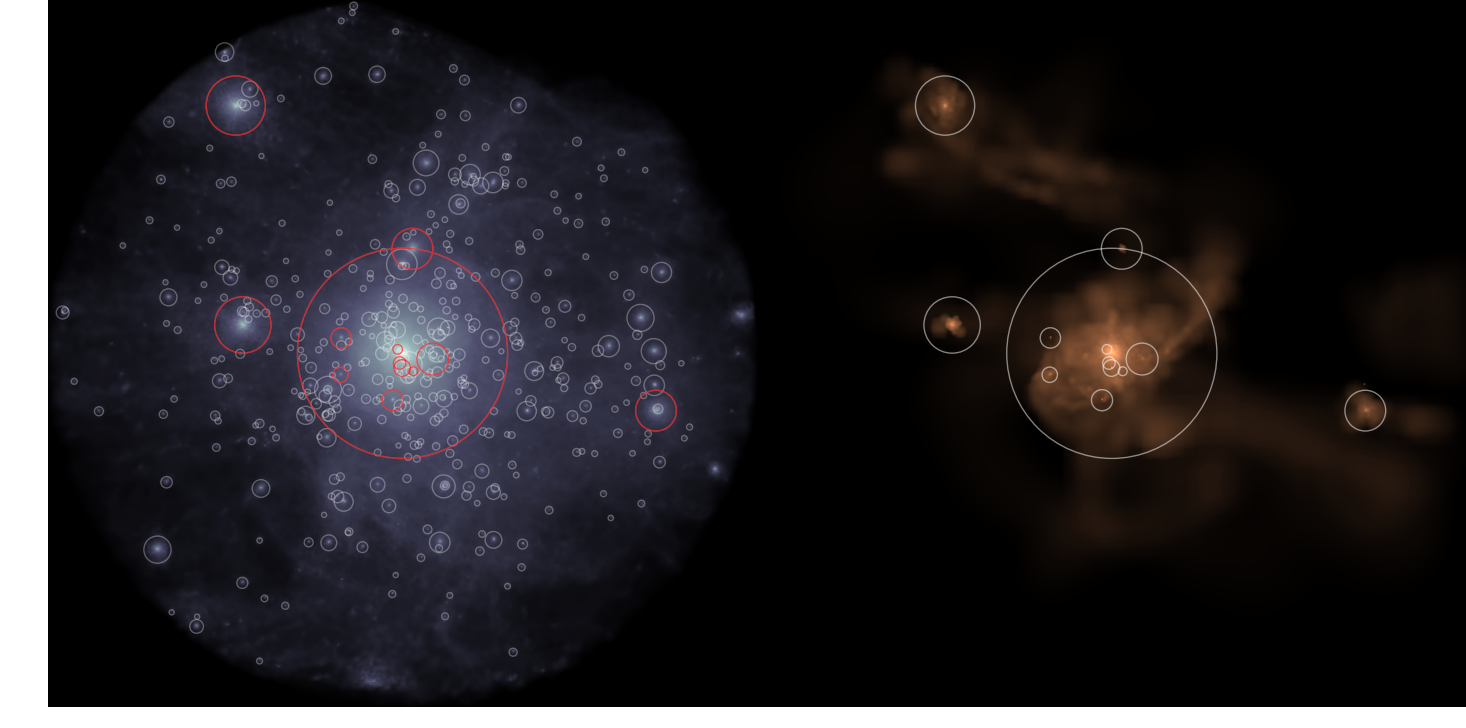Milky-Way Simulation Analysis
Inferring of the the Dark Matter Density Profiles of Satellite Galaxies from the Stellar Kinematics using MCMCs.
For my undergraduate thesis, I analyzed a high resolution simulation of a system of galaxies similar to the local group, where the main galaxy had characteristics and dynamical properties similar to the Milky-Way ( mass, rotational velocity, thickness of the disk, etc. ). My work consisted of measuring the dynamical properties of the stars in the satellite galaxies and from those measurements I used Monte Carlo Markov Chains (MCMCs) to fit models to the density profiles of the dark matter halos that hosted those satellite galaxies. Then I compared the estimated density profiles to the real halo density profiles that I measured directly from the dark matter particles in the simulation, this allowed me to compare the results of statistical methods used in astronomy to estimate the dark matter profile of the halos from observed satellite galaxies to the actual profile in the simulation and evaluate how accurate are the estimates from observations. In particular I focused on the the density at the most inner part of the halos where currently there is a discrepancy between the theory and the observations, this is known as the Core-Cusp problem.

The image above shows the Dark Matter (right) of the simulated local group and the stellar content (or galaxies) on the left. The dark matter halos are indicated with circles.